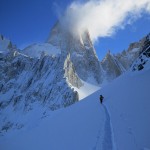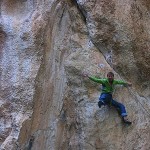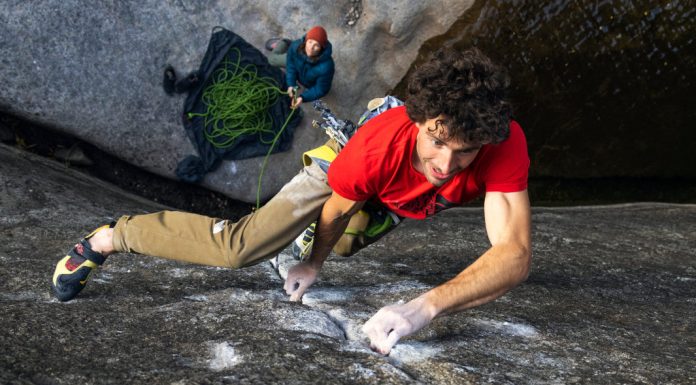by Mick Ryan cliff ecology study At White Cliff, a 300-foot-high cliff line in Cumberland Gap National Historical Park in Kentucky climbers expressed an interest to develop the area for climbing. ´Hold on,´ said the National Park Service who then commissioned an ecological survey which was conducted by the biology department at Appalachian State University, specifically to assess the impacts of rock climbing on sensitive or rare plants on the cliff face. First off they found 49 species of lichen, one never found before in the Southeast USA, and three rare plants: Canada mayflower, Appalachian stitchwort, and silvery nailwort. Climbers helped in the study using their rope skills to access the cliff and take samples. The final report recommends that the site be closed to rock climbing because of the sensitive and rare nature of its plant community. Gary Walker, professor of biology at Appalachian State University who conducted the study said that land managers at Cumberland Gap were far-sighted in requesting the cliff ecology study at White Rocks while the site is still unclimbed. “The popularity of rock climbing is growing rapidly, and in many cases, climbers are working closely with national parks to minimize the damage done,” Walker said. “Rock climbers are environmentalists. They enjoy the outdoors like the rest of us.” Full article at knoxnews.com
- Home
- News
- Videos
- Fotos
- Klettergebiete
- Unternehmen & Produkte
- Themen
- Themen beginnend mit 0-9
- Themen beginnend mit A
- Themen beginnend mit B
- Themen beginnend mit C
- Themen beginnend mit D
- Themen beginnend mit E
- Themen beginnend mit F
- Themen beginnend mit G
- Themen beginnend mit H
- Themen beginnend mit I
- Themen beginnend mit J
- Themen beginnend mit K
- Themen beginnend mit L
- Themen beginnend mit M
- Themen beginnend mit N
- Themen beginnend mit O
- Themen beginnend mit P
- Themen beginnend mit Q
- Themen beginnend mit R
- Themen beginnend mit S
- Themen beginnend mit T
- Themen beginnend mit U
- Themen beginnend mit V
- Themen beginnend mit W
- Themen beginnend mit X
- Themen beginnend mit Y
- Themen beginnend mit Z
- Routendatenbank
Climbing.de ist eine der ältesten deutschsprachigen Bergsportseiten im Internet.
Seit 1998 präsentiert Inhaber Martin Joisten, dessen Texte und Bilder in zahlreichen nationalen und internationalen Publikationen zu finden sind, aktuelle Informationen aus der Welt des Bergsports.
Seit 1998 präsentiert Inhaber Martin Joisten, dessen Texte und Bilder in zahlreichen nationalen und internationalen Publikationen zu finden sind, aktuelle Informationen aus der Welt des Bergsports.
Kontaktieren Sie uns: info@climbing.de
© Copyright 1998 - 2022 Climbing.de by Martin Joisten


![[VIDEO] Alexander Megos: URSUS | The days after the send URSUS | The days after the send (c) Alexander Megos](https://www.climbing.de/wp-content/uploads/2024/03/youtube_WCZVR9-tZTc-218x150.jpg)

![[VIDEO] Stefano Ghisolfi: ALL my secrets about ENDURANCE Stefano Ghisolfi: ALL my secrets about ENDURANCE (c) Stefano Ghisolfi](https://www.climbing.de/wp-content/uploads/2024/03/youtube_xlQ2OreHL60-218x150.jpg)
![[VIDEO] THE FULL JOURNEY 9B FA by Alexander Megos THE FULL JOURNEY 9B FA by Alexander Megos (c) Alexander Megos](https://www.climbing.de/wp-content/uploads/2022/12/youtube_QwjykRehg7M-218x150.jpg)
![[VIDEO] MEGATRON V17 MEGATRON V17 (c) mellow](https://www.climbing.de/wp-content/uploads/2022/12/youtube_f_MniTA8MYU-218x150.jpg)
![[VIDEO] Moulin Rouge (7b) Free Solo | Jonas Hainz Moulin Rouge - Free Solo (c) Jonas Hainz](https://www.climbing.de/wp-content/uploads/2022/10/youtube_UQs4KNRBHss-218x150.jpg)












